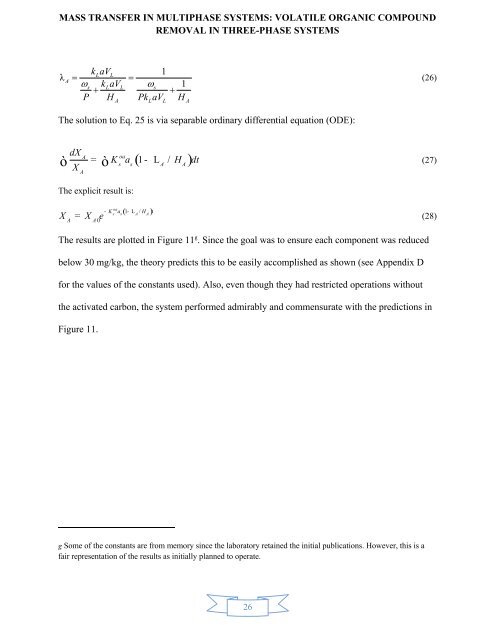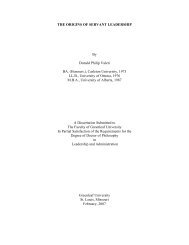mass transfer in multiphase systems - Greenleaf University
mass transfer in multiphase systems - Greenleaf University
mass transfer in multiphase systems - Greenleaf University
Create successful ePaper yourself
Turn your PDF publications into a flip-book with our unique Google optimized e-Paper software.
MASS TRANSFER IN MULTIPHASE SYSTEMS: VOLATILE ORGANIC COMPOUND<br />
REMOVAL IN THREE-PHASE SYSTEMS<br />
λ<br />
A<br />
kaV<br />
L L<br />
1<br />
<br />
<br />
s<br />
kaV<br />
L L<br />
s<br />
1<br />
<br />
<br />
P H Pk aV H<br />
A L L A<br />
(26)<br />
The solution to Eq. 25 is via separable ord<strong>in</strong>ary differential equation (ODE):<br />
dX<br />
A<br />
oa<br />
ò = ò K a ( 1 - L / H<br />
s s A A)<br />
dt<br />
(27)<br />
X<br />
A<br />
The explicit result is:<br />
X X e<br />
- oa<br />
K a ( 1 / H s s - L A A)<br />
t<br />
= (28)<br />
A<br />
A0<br />
The results are plotted <strong>in</strong> Figure 11 g . S<strong>in</strong>ce the goal was to ensure each component was reduced<br />
below 30 mg/kg, the theory predicts this to be easily accomplished as shown (see Appendix D<br />
for the values of the constants used). Also, even though they had restricted operations without<br />
the activated carbon, the system performed admirably and commensurate with the predictions <strong>in</strong><br />
Figure 11.<br />
g Some of the constants are from memory s<strong>in</strong>ce the laboratory reta<strong>in</strong>ed the <strong>in</strong>itial publications. However, this is a<br />
fair representation of the results as <strong>in</strong>itially planned to operate.<br />
26



